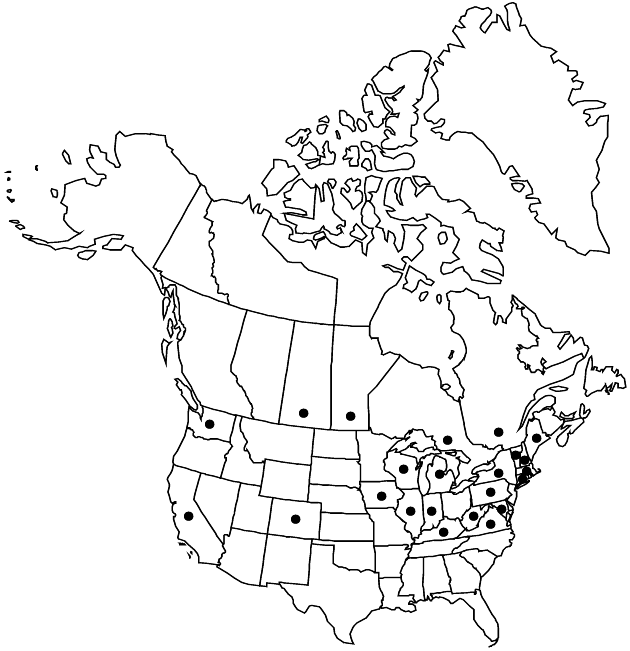Echinops sphaerocephalus
Sp. Pl. 2: 814. 1753.
Plants 100–200 cm. Stems simple to much branched, ± glandular, ± tomentose. Leaves: basal and proximal cauline leaves shortly winged-petiolate, distal cauline sessile, clasping; blades oblongelliptic to narrowly obovate, margins ± subentire or 1–2-pinnately lobed, lobes lanceolate to triangular, margins revolute, spiny-dentate, spine-tipped, spines slender, 2–4 mm; abaxial faces densely gray or white-tomentose, adaxial faces green, glandular-scabrous. Secondary heads 3–6 cm diam. Involucres 15–25 mm. Outer phyllaries ± glandular, inner phyllary apices attenuate, expanded, fringed. Corollas white to pale blue, 12–14 mm, tube ca. 5.5 mm, lobes ca. 7 mm. Cypselae 7–10 mm; pappi of ± connate, ciliate scales 1–1.5 mm. 2n = 30, 32.
Phenology: Flowering summer (Jun–Aug).
Habitat: Disturbed sites
Elevation: 0–1700 m
Distribution

Introduced; Man., Ont., Que., Sask., Calif., Colo., Conn., Ill., Ind., Iowa, Ky., Maine, Md., Mass., Mich., N.H., N.Y., Pa., Vt., Va., Wash., W.Va., Wis., Eurasia
Discussion
Echinops sphaerocephalus is sometimes cultivated, and sometimes it escapes from cultivation. The species has been reported from Saskatchewan and may be introduced there; that appears questionable.
Selected References
None.
Lower Taxa
"fine" is not a number.